TSA, border agents and airlines are asking for your photo. Here's what to know.
Grappling with children and luggage, the hours of travel sometimes weighing heavier than the bags, flyers are inching closer to their destination when the government or an airline asks for just a bit more data before they continue on their way: a photo.
The use of such biometric data — unique physical characteristics, such as fingerprints or, in this case, a facial image — is becoming ever more prevalent at airports and has taken off at stops like the Detroit Metropolitan Airport.
But are you required to surrender this personal data? And what happens to it?
Here’s what we know:
Who is using facial recognition at the airport?
The government, for starters.
U.S. Customs and Border Protection and the Transportation Security Administration use biometric facial matching technology, and Delta Air Lines and Spirit Airlines are also in the game at DTW, Wayne County Airport Authority spokesman Randy Wimbley confirmed.
There is also CLEAR, the technology company known for its biometric screening process at airports.
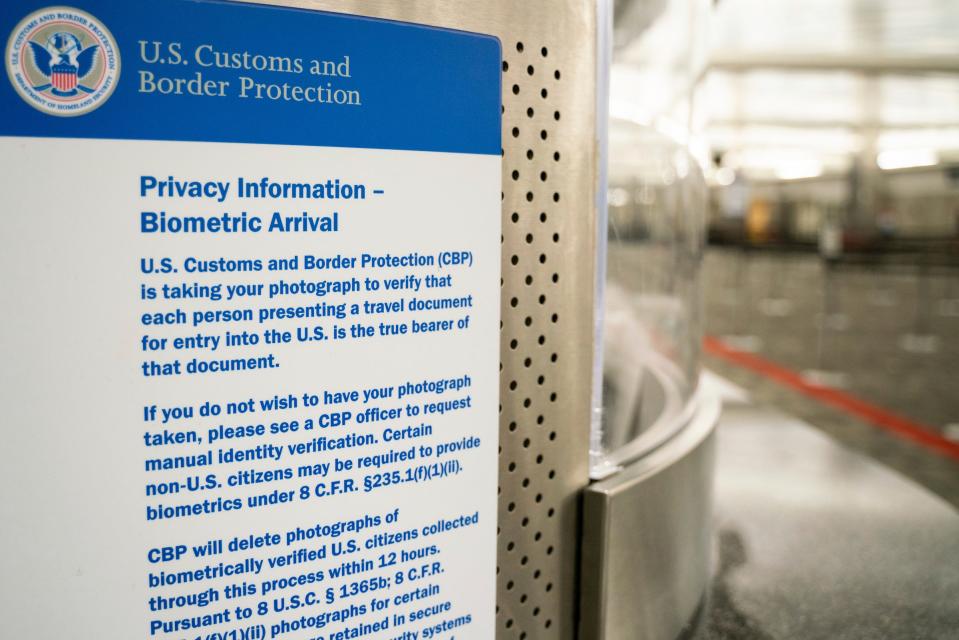
DTW has the technology at eight international gates in the Evans Terminal and at concourses in the McNamara Terminal, according to the airport website.
And that’s just at DTW. Across the world, others are also using this technology at airports.
Where are face scans being used at the airport?
DTW notes that the scans are used for boarding at the Evans Terminal and check-in and gate counters at the McNamara Terminal.
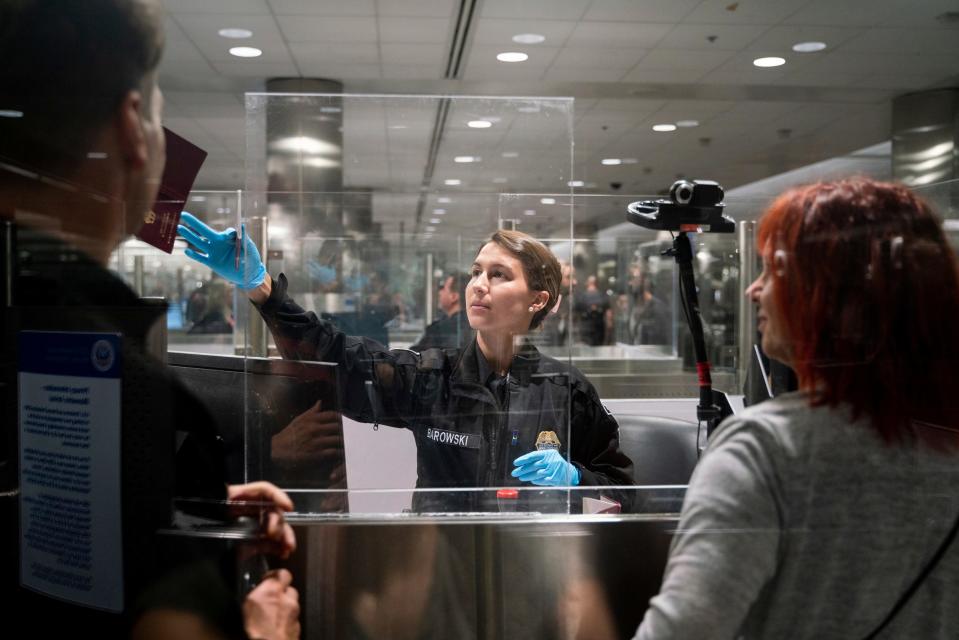
For government agencies, it’s for identity verification and security checks for domestic and international flyers.
For Spirit, it’s for a self-bag drop program in which flyers can check their luggage without talking to airline personnel.
For Delta, it’s for a digital ID pilot program promoted as a “curb-to-gate experience,” in which facial recognition is used instead of a physical ID and boarding pass while dropping off your bag, going through security, and boarding.
Delta also has a Parallel Reality program at DTW, where travelers can stand side-by-side and look at the same screen but see personalized flight information. At its launch, this program used facial matching, but it is now being run without biometrics, Delta spokesperson Catherine Morrow said in an email.
Are you required to submit a facial scan at the airport?
No, but there are a couple of caveats.
Foreign nationals visiting the U.S. generally don’t get to opt out of the border protection, or CBP, process. There are exceptions based on things like age, diplomatic status, and for certain Canadians traveling as tourists, Area Port Director Robert Larkin said.
There also are reports of some difficulty opting out. While the TSA states flyers can opt out and do a manual verification instead without delay, one Detroiter told The Washington Post that a D.C.-area TSA agent claimed the screening was required. Additionally, Sen. Jeff Merkley, D-Ore., said when he sought to opt out of a facial scan, he was warned he may be delayed. He wasn’t.
Also, the head of the Transportation Security Administration, David Pekoske, said at a 2023 South by Southwest panel that one day biometrics won’t be optional, The Dallas Morning News reported.
What happens with your facial print at the airport?
U.S. citizens' photos taken at the border are kept for no more than 12 hours, according to the CBP. The photos of most foreign nationals entering the country are stored by the Department of Homeland Security (DHS).
With TSA, the photos taken at DTW “are never stored or used for any other purpose than immediate identity verification,” TSA regional spokesperson Jessica Mayle said. Some data, but no photos, is sent to DHS to monitor the match success rate.
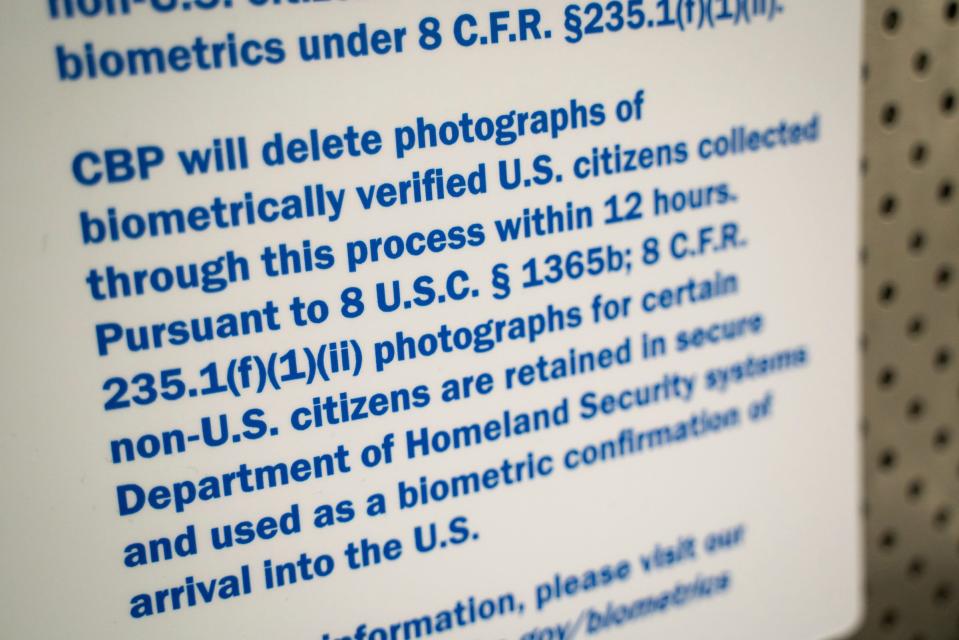
Delta, whose ID program is tied to the CBP facial matching service, does not save or store any biometric data, and it does not give or sell it to third parties, said Morrow.
As for Spirit Airlines, the data collected by the photo-matching bag drop is not transmitted to any government agency, according to a news release.
In its privacy policy, in a disclosure to meet California laws, Spirit Airlines listed the groups it would give biometric data to “for business purposes” as “affiliates or subsidiaries” and “other service providers.” Spirit Airlines’ media department did not respond to requests for comment.
What are the benefits of facial recognition at the airport?
Those deploying the technology point to faster, easier air travel.
Spirit Airlines boasted a 30% reduction in time spent at bag check during testing for its program. That puts the average processing at 1 minute and 10 seconds per guest, the airline stated in a news release.
Larkin of the CBP said the less time his officers are looking at documents, the more time they are focused on other forms of threat detection.
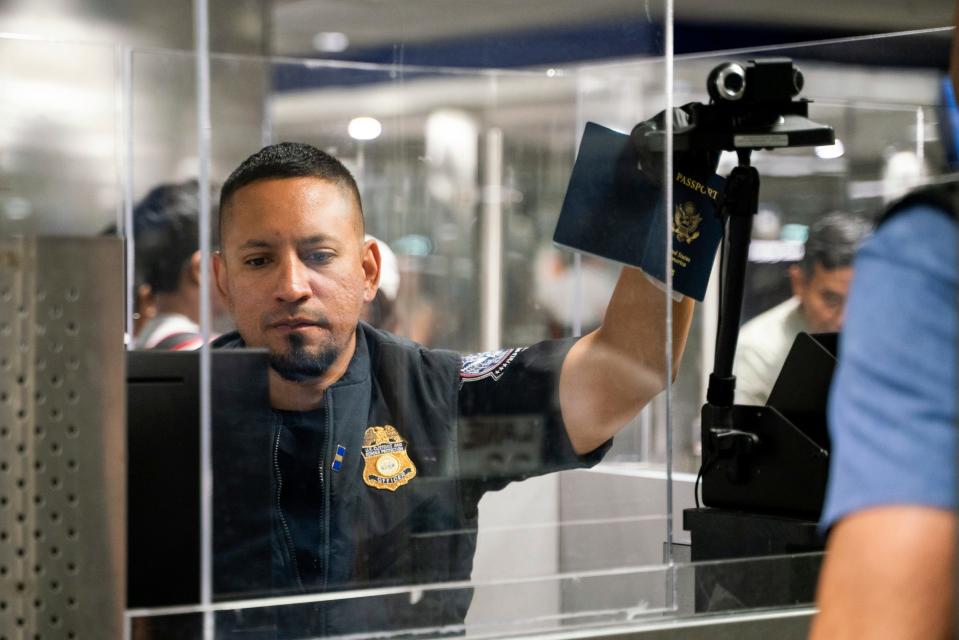
“It enables the officer to focus more on what we call the unknown — the stories, the information that the travelers convey to the officer,” he said.
Such programs will help the TSA “better meet the challenges of evolving security threats, rising air travel volumes, and resource constraints,” according to a TSA statement.
What do privacy advocates say about facial recognition at the airport?
Facial scans at airports don’t fly with a number of privacy advocates.
The country doesn’t have good privacy laws to keep up with the rapidly evolving and powerful technologies at play, said Jay Stanley, senior policy analyst with the American Civil Liberties Union Speech, Privacy, and Technology Project.
Stanley raised concerns with error rates, especially for people with darker skin tones. That aspect is a particularly hot issue in Detroit, where facial recognition technology has led to the wrong suspect in police investigations.
“Really, the biggest danger is where things go,” Stanley said, adding that the TSA and DHS have laid out ambitious plans for use of this technology.
The fear is broader usage and an Orwellian future where this technology can even be used to track who people are associating with, Stanley said. Biometric fingerprint collection doesn’t present the same level of concern.
Five U.S. senators also called in February 2023 for the TSA to halt its program, describing it as a threat to democracy and raising alarms about the potential of racial discrimination, hacking, and poorly communicated opt-out options.
Both the TSA and the CBP have stood by the accuracy of the matches and noted continual work to evaluate and refine the tool.
“TSA is committed to protecting passenger privacy, civil rights, and civil liberties and secures all personal data collected as part of our biometric efforts,” Mayle, of the TSA, said.
The agency is also “committed to ensuring continued accuracy of these systems across all demographic groups," she said.
Larkin, of CBP, also said his agency is committed to its privacy obligations and pointed to encryption during storage and transfer, irreversible biometric templates, and brief retention time frames.
How do I sign up for airport facial scans?
For the TSA and CBP, generally, just say, “cheese.”
The scans are not used every time or in every lane of TSA at DTW, so not every flyer will experience it, said Mayle of the TSA.
Facial scans are also used as part of the CBP’s Global Entry program for faster border clearance. That program costs $100, and it requires a background check and interview, according to the agency website. You can start the process online at the CBP website.
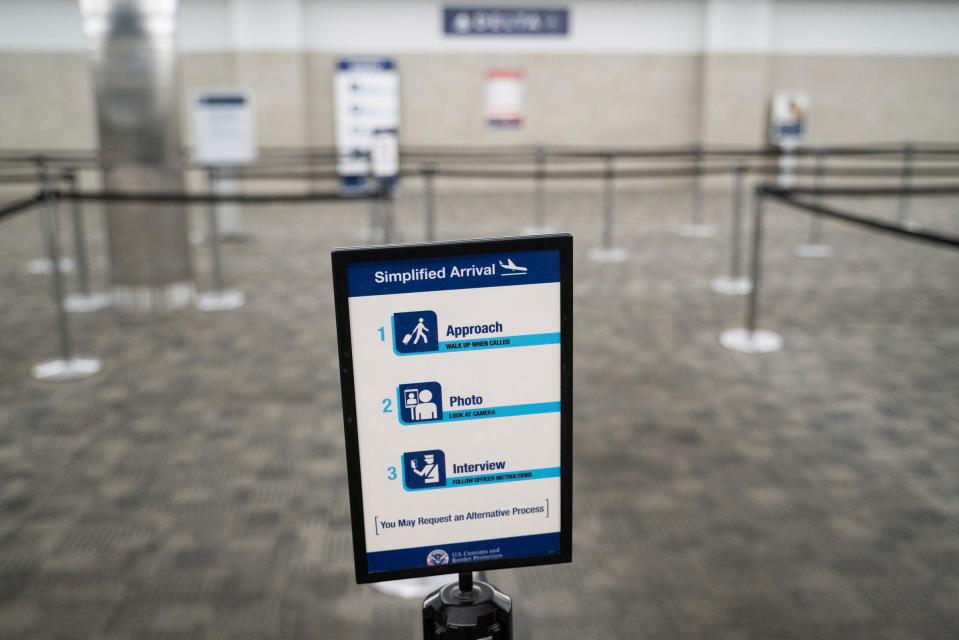
For Delta Digital ID, you’ll need to have a passport, be a Delta SkyMiles member, and be signed up for TSA PreCheck. You’ll store information from all of those in your SkyMiles profile, then opt-in there or at check-in using your Fly Delta app, according to the Delta website.
For Spirit, once at the airport, check in at a kiosk, tag your bag, go to the self-bag drop, and opt-in, according to a news release.
Note: You still need to bring the right physical documentation with you. These approaches just might keep you from having to dig it out at the airport.
How do I opt out of facial scans at the airport?
Speak up, right away.
While certain entities, like Delta, have a clear “opt-out” and “opt-in” button baked into their process, others, like the CBP, don't require officers to outright ask you, “Do you want to submit to facial matching?”
There is an assumption that by walking up and engaging with the TSA machines, flyers are opting in, said Mayle, of the TSA. Signs near the TSA agents explain the scan is optional and the machines look different than the typical setup — they look like vertical iPads and, on the screen, state the photo is optional and will be deleted as soon as the encounter ends. Still, Mayle said to speak up, quickly.
"We’ve had instances where people walk up, they don’t opt out, the camera takes their picture and we say, 'Go ahead,' and they say, 'Oh, no, no, no, I don’t want my picture taken,' " said Mayle.
At that point, what is done is done. Mayle also said the TSA will continue to assess and improve communication materials.
Larkin, of the CBP, said there are also signs near the border agents processing international travelers that convey that the scan is optional for many. One sign, attached to metal siding near a booth on a July day, explained it in the second paragraph of a privacy notice and noted the retention policy in a third. Another sign at an agent's booth noted an "alternative process" could be requested.
A Spirit spokesperson could not be reached to clarify exactly how an opt-out is communicated for its service. Guests learn of the biometric option after they scan their boarding pass at the bag drop, according to its release. Flyers can then either opt in or choose to work with an agent instead.
How do travelers feel about it?
It depends on the traveler, of course.
Justin Schoenle, 36, of Indiana, had previously used the CBP’s expedited Global Entry process but hadn’t renewed in time for his return flight to Detroit from a business trip to Germany in July 2023. He used the general lines with everyone else and said he’s fine with the data collection if it makes things go faster.
“My photos are out there on social media and stuff anyways, so if somebody really wanted to take it, they’d have other means to taking it,” he said.
Picking up her bag from the conveyor belt the same day, ahead of her connecting flight, Cherie Himmelreich, 47, of Maryland, said her trip to Frankfurt, Germany, was her first time traveling internationally in probably 30 years.
“If it helps keep us safe, I’m good,” she said of the data collection.
Brian Nelson, 30, of Houston, who was wearing multicolored cowboy hats with his friends after an international trip to the Tomorrowland music festival, was a bit more wary.
Nelson said he didn’t realize he had much of an option but to submit to the facial scan, and though he read a sign about an alternate process multiple times, he wasn’t sure what that would entail. He didn’t know if it meant being hauled away for 30 minutes to a separate room. He’d like to see some clearer explanations on that.
“I just really like my privacy and personal liberties, and I think have a healthy, general distrust of people in the most general sense,” he said.
This article originally appeared on Detroit Free Press: TSA, border agents, airlines now ask for your photo: What to know

